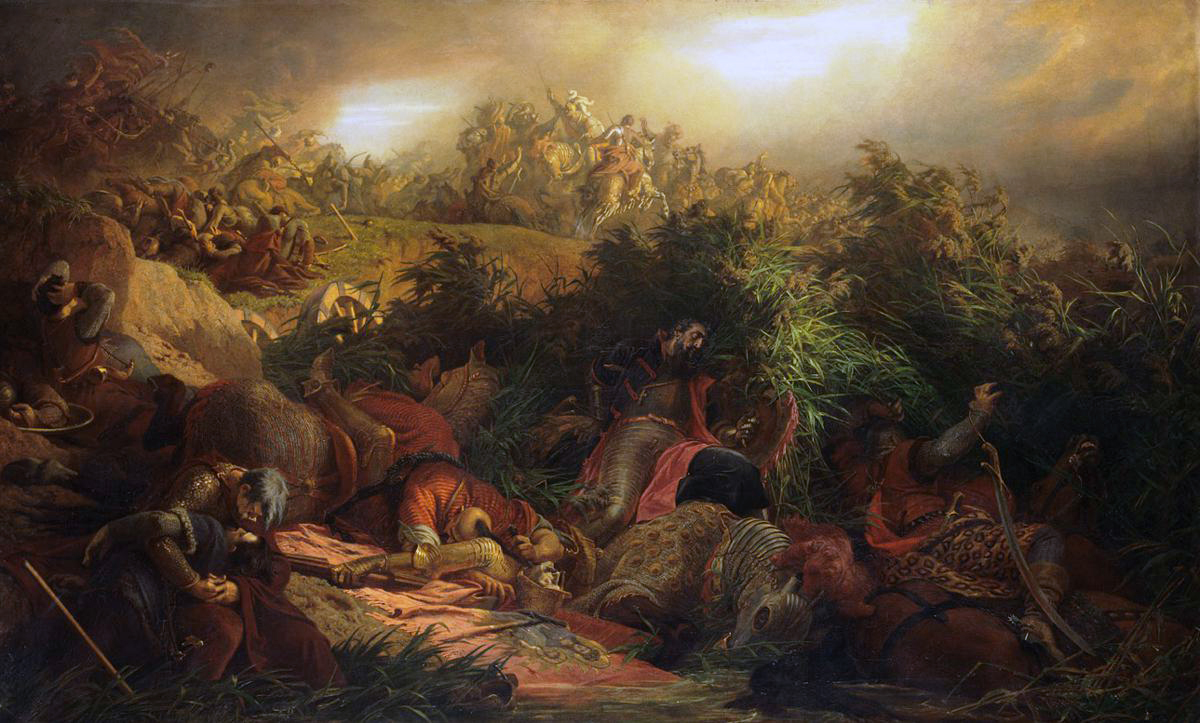
Battle of Mohács
Mohács, HungaryAfter the siege of Rhodes, in 1526 Suleiman made a second expedition to subdue all of Hungary. Around the middle of July, the young King departed from Buda, determined to "either fight back the invaders or be crushed once and for all". Louis made a tactical error when he tried to stop the Ottoman army in an open field battle with a medieval army, insufficient firearms, and obsolete tactics. On 29 August 1526, Louis led his forces against Suleiman in the disastrous Battle of Mohács. The Hungarian army was surrounded by Ottoman cavalry in a pincer movement, and in the center the Hungarian heavy knights and infantry were repulsed and suffered heavy casualties, especially from the well-positioned Ottoman cannons and well-armed and trained Janissary musketeers.
Nearly the entire Hungarian Royal army was destroyed in nearly 2 hours on the battlefield. During the retreat, the twenty-year-old king died when he fell backwards off his horse while trying to ride up a steep ravine of the Csele stream. He fell into the stream and, due to the weight of his armor, he was unable to stand up and drowned. As Louis had no legitimate children, Ferdinand was elected as his successor in the Kingdoms of Bohemia and Hungary, but the Hungarian throne was contested by John Zápolya, who ruled the areas of the kingdom conquered by the Turks as an Ottoman client.
Ask Herodotus
HistoryMaps Shop

Heroes of the American Revolution Painting
Explore the rich history of the American Revolution through this captivating painting of the Continental Army. Perfect for history enthusiasts and art collectors, this piece brings to life the bravery and struggles of early American soldiers.








